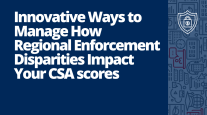DOT Inspector General Agrees to Audit CSA After Request From Congress
This story appears in the Oct. 22 print edition of Transport Topics.
The Department of Transportation’s Inspector General has agreed to conduct an in-depth audit of the government’s Compliance, Safety, Accountability program and to include a look at the relationship between carrier safety scores and crash risks.
The Oct. 12 audit request was made by Rep. John Duncan Jr. (R-Tenn.), chairman of the House Transportation Subcommittee on Highways and Transit, and the ranking Democratic member, Rep. Peter DeFazio (D-Ore.).
“Witnesses at the Sept. 13 [subcommittee] hearing raised concerns that a lack of adequate safety data, inappropriate weighting of violations and other scoring problems are causing CSA to erroneously label carrier safety performance,” said the audit request letter from the congressmen.
Peter Barber, an analyst with the DOT inspector general, confirmed last week that one focus of the audit probably will be on the relationship of CSA carrier safety data to crash risk. He spoke during a meeting of a specially appointed CSA subcommittee of the Federal Motor Carrier Safety Administration’s Motor Carrier Safety Advisory Committee.
Barber said the congressional subcommittee wants the audit completed by August, although an IG spokesman told Transport Topics that no specific timeline has been set.
The congressional audit request specifically called on the IG to “characterize the relationship between scores and future crash risk,” examine whether the weight given to each violation is tied to crash risk or crash severity, and if it is possible for carriers to “have high scores that erroneously reflect the fleet’s safety performance.”
Also, the subcommittee wants to know if it is possible for some carriers with potential safety problems to not be identified and targeted by CSA.
“FMCSA makes carriers’ scores public so that third parties involved in the transportation industry can make safety-based business decisions,” one of the audit questions in the letter said. “Given your findings, is a carrier’s CSA score an accurate portrayal of the safety of the carrier? If so, is this accurate for all” the components of the safety program, known as BASICs?
Sean McNally, a spokesman for American Trucking Associations, said ATA backed the call for an audit.
“The congressmen’s concerns are legitimate and appropriate and should be explored to the extent that they line up with the concerns that we have expressed,” he said.
Members of the FMCSA’s subcommittee on CSA last week began outlining their future discussions about program improvements during a lively debate, a process expected to “take months and years,” said the subcommittee’s chairman, David Parker.
Subcommittee member Jeffrey Tucker, CEO of logistics provider Tucker Co. Worldwide, said shippers are confused about how to use the data in determining which carriers are safe, creating an “impediment to buy-in” of the system.
But Bill Quade, FMCSA’s associate administrator for enforcement, said the agency’s mission is not to assure the public that the trucking industry is safe.
“Under the best of circumstances, we are not going to tell you who’s safe,” he said. “The system is designed to identify the people that are so unsafe we need them out of business.”
But Quade also acknowledged that CSA remains a “work in progress.”
Robert Petrancosta, vice president of safety for Con-way Freight, urged more FMCSA action, saying that CSA is in the midst of an “identity crisis” because it has evolved from a program aimed at identifying crash risk to one that adds regulatory compliance to the mix.
ATA, which supports the CSA study, has nonetheless been a vocal critic of some facets of the program.
The same day of the CSA subcommittee hearing, ATA released a white paper outlining several examples of how FMCSA highlights the benefits of CSA but could provide a clearer picture of the program’s weaknesses.
“ATA’s members are supportive of CSA’s objectives, but they are also eager to see FMCSA make much-needed improvements,” said Rob Abbott, ATA’s vice president for safety policy. “However, the first step in that process is a candid acknowledgment of the program’s limitations.”
Some of those limitations, ATA said, include:
• Carriers’ scores in three of CSA’s seven measurement categories do not effectively identify future crash risk.
• FMCSA has only sufficient violation data to assign a percentile rank to 12% of all active carriers.
• Carriers with insufficient data should not be perceived as safer than those that have reported data.


